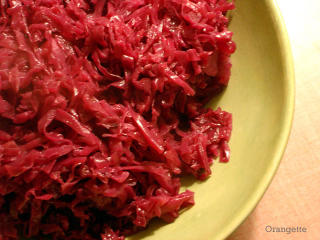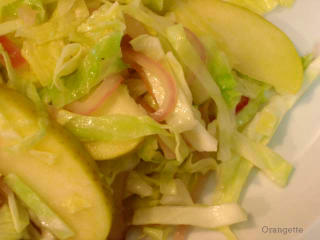Tag: grad school
Outline of a Theory of Cabbage
Be warned: I’m baring my geek stripes. If you’re of weak constitution, please avert your eyes.
Since our lengthy discussion of soufflé, I’ve spent a lot of time thinking about cabbage. After all, whenever I’m plotting a soufflé for dinner, cabbage inevitably shows up, usually bringing its posse of caraway seeds, vinegar, and an apple or two. It doesn’t take much to convince me to eat this humble crucifer, and anyway, the unctuous, dairy-rich egginess of a cheese soufflé truly has no better match than the sweet-tart earthiness of braised cabbage. I think a lot about these sorts of things, and about social science. And that’s where things get geeky.
Today, while riding the bus home from work and school, I wracked my brain for a way to “pitch” cabbage to you, skeptical reader. Surely I don’t have to tell you that, in the U.S., the cabbage is woefully misunderstood. Never mind the fact that German kids are eating sauerkraut as soon as they have teeth, or that corned beef and cabbage may well be the best thing to come out of Ireland, ever. Here it is roundly reviled, or at least disliked enough to permit me this slight exaggeration. So as the bus rattled north toward home and dinner, a silent conviction took shape within me: cabbage must be defended! What we have here is cabbage under siege! Cabbage must no longer be linked to discipline and punishment; no, it’s part of the natural order of things! By the time we arrived at my stop, I had it: an outline of a theory of cabbage.
Dear reader, you know that it’s time to close the book on graduate school when even vegetables call to mind famous works of social theory, such as Michel Foucault’s “Society Must Be Defended,” Discipline and Punish, and The Order of Things; Zygmunt Bauman’s Society Under Siege; and Pierre Bourdieu’s Outline of a Theory of Practice. I wince just typing this, and I pity my poor companions on the bus, who I probably blinded with the blazing rays of geekiness emanating from my feverish brain.
But I’m deathly serious about this defense-of-cabbage business. Nearly everyone I consider a friend shares my appreciation for it, and I wouldn’t be the least bit surprised if our friendship were in fact based upon some cabbage lover’s force field we mutually exert upon each another. And on some level (far below consciousness until this writing), I’ve been putting men to “the cabbage test” for years: I’ve eaten the stuff in some form or other with every man I’ve taken seriously, and it works every time. Often they’re okay with geekiness too.
So, when you start daydreaming about what to serve with your soufflé (or anything else, for that matter), please give this theory a try: I hold that, under both controlled and uncontrollable conditions, one who tries braised red cabbage with apples and caraway seeds will come back for more,

and the same goes for an even simpler preparation, sautéed green cabbage with apples and red onions.

A Pinot Noir would be nice as well, and a bookmark.
This is delicious warm, at room temperature, or straight from the fridge. Heat oil in a large, nonreactive skillet or Dutch oven over medium-low heat. Add onions and cook until translucent and slightly golden. Add cabbage, apple, vinegar, honey, salt, and caraway seeds; then cover pan and cook over medium-low heat, stirring occasionally, until the cabbage is very soft but not falling apart, about an hour. Yield: 4 servings This is delicious warm or at room temperature. In a large sauté pan or Dutch oven, heat a little oil and sauté onions until translucent and just beginning to brown. Add the apples, and sauté one minute, or until everything is sizzling. Add the cabbage, the salt and pepper, a dash of vinegar, and a little water. Stir over high heat just long enough to barely soften and cook the cabbage, a few minutes. It should retain a little crunch but lose the raw flavor of uncooked cabbage. Adjust seasoning, and serve. Yield: 6 to 8 servingsBraised Red Cabbage with Apples and Caraway Seeds
Adapted from The All New Joy of Cooking
Sautéed Green Cabbage with Apples and Red Onions
Adapted from Chez Panisse Vegetables

